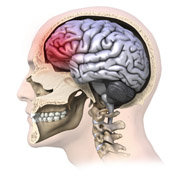Research and Innovation, UNL Office of

Center for Brain, Biology, and Behavior: Faculty Publications
ORCID IDs
Adam B. Rosen http://orcid.org/0000-0002-1204-2289
Document Type
Article
Date of this Version
2020
Citation
Published in Research in Sports Medicine (2020)
doi:10.1080/15438627.2020.1723099
Abstract
The purpose of this study was to determine if there were neurocognitive deficits among controls, copers and those with chronic ankle instability (CAI). Participants included those without history of ankle injury (n = 14), ankle sprain copers (n = 13) and patients with self-reported CAI (n = 14). They completed a battery of valid and reliable computer-based neurocognitive tests. The differences between neurocognitive domain scores were compared across the Control, Coper and CAI groups. Patients with CAI had lower composite memory, visual memory and simple attention compared to controls. In males with CAI, large differences in memory and attention were found relative to control participants. These differences may contribute to uncontrolled episodes of giving way through deficits in spatial awareness and/or an inability to identify environmental obstacles. Clinicians should explore ways to provide additional stimuli through innovative rehabilitation protocols aimed at maximizing neurocognitive abilities in patients with CAI.
Included in
Behavior and Behavior Mechanisms Commons, Nervous System Commons, Other Analytical, Diagnostic and Therapeutic Techniques and Equipment Commons, Other Neuroscience and Neurobiology Commons, Other Psychiatry and Psychology Commons, Rehabilitation and Therapy Commons, Sports Sciences Commons


Comments
Copyright © 2020 Informa UK Ltd, Taylor & Francis Group. Used by permission.